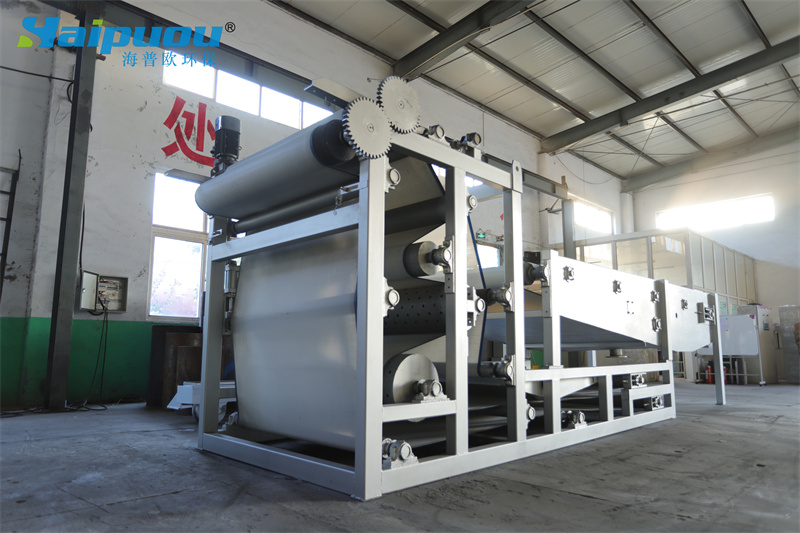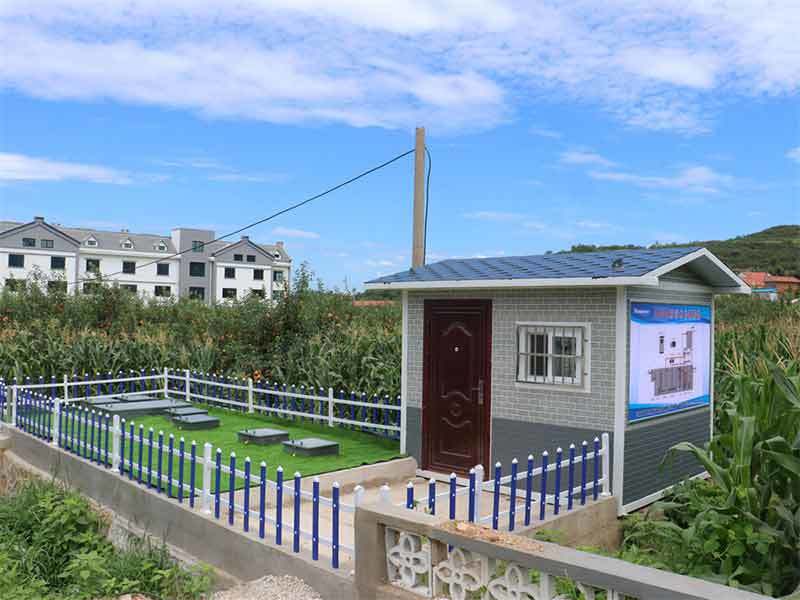- Overview
-
- Commodity name: Mine sludge treatment equipment
I. Introduction to Tailings Slurry Treatment Equipment
All dewatering discs and feed hoppers of the tailings slurry treatment equipment are made of stainless steel, featuring strong corrosion resistance. The equipment operates continuously, with a long gravity dewatering section and a reverse rotation mechanism, which ensures excellent dewatering effect and significantly improves processing capacity. According to the properties of sludge and the amount of incoming sludge, different flocculants can be added to the tailings slurry treatment equipment. It allows flexible adjustment of filter belt tension and filter belt moving speed, and the filter belt is equipped with an automatic deviation correction device.

II. Process Flow of Tailings Slurry Treatment Equipment
A pipeline mixer and a sludge distributor are installed at the inlet of the tailings slurry treatment equipment. After the sludge and flocculant are fully mixed, they are evenly distributed on the horizontal section of the upper filter belt for gravity dewatering. To quickly discharge the free water in the sludge, the following four measures are adopted:
- An open filter belt support frame is installed at the lower part of the horizontal sections of the upper and lower filter belts, which helps break the tension of water in the filter belt pores and enables the filtrate to be effectively discharged through each filter hole.
- Sludge-turning plows: Multiple sets of sludge-turning plows are arranged on the horizontal section of the upper filter belt, installed in a staggered front-to-back manner. They can continuously turn the sludge from one side to the other, increasing the contact opportunity between the sludge and the filter belt and accelerating the discharge of free water.
- Sludge flipping: At the end of the upper filter belt, the sludge gently falls onto another clean lower filter belt that operates in the opposite direction. This makes the upper surface of the sludge come into contact with the filter belt, improving dewatering efficiency.
- Proper selection of filter belt and gravity dewatering area: The filter belt pores and weaving method are reasonably selected after sludge dewatering tests to ensure the dewatering effect. The gravity dewatering area is the key to the dewatering capacity of the tailings slurry treatment equipment; the larger the gravity dewatering area, the higher the dewatering efficiency.
III. Working Principle of Tailings Slurry Treatment Equipment
According to the different pressures in the dewatering area, the entire dewatering process can be divided into three parts: the screen pre-dewatering area, the pressure dewatering area, and the pressure-forced dewatering area.
The slurry is evenly distributed in the upper screen pre-dewatering area through the slurry distributor, and then enters the gravity dewatering area. In this area, the sludge removes most of the water mainly by its own gravity, making the slurry lose fluidity and increasing the dewatering concentration to 3%-5%. Then, it continues to dewater on the middle screen, and the slurry enters the wedge-shaped intersection area formed by the middle and lower screens, i.e., the pressure dewatering area. In this area, the slurry is slightly squeezed by the middle and lower screens, and the water content is reduced to approximately 15%-20%, after which it enters the pressure dewatering area. The pressure dewatering area consists of dewatering rolls with different diameters, enabling the two sides of the screen to quickly dewater during the squeezing process. The dewatering pressure rolls are arranged with diameters gradually decreasing, and the wrap angle of the screen is changed, which ensures the formation of continuously increasing dewatering pressure and corresponding shear force. This causes the slurry to deform repeatedly in the dewatering area and continuously remove water until the concentration reaches over 28%, forming a mud cake, which is then scraped off by the mud scraper. The screen from which the slurry has been removed is cleaned with high-pressure water and then enters the next working cycle.

IV. Advantages of Tailings Slurry Treatment Equipment
- The full purification of slurry is conducive to controlling the performance indicators of slurry, preventing drill jamming accidents, and ensuring hole forming quality.
- The effective separation of dregs is beneficial to improving the hole-forming efficiency.
- The reuse of slurry helps save slurry-making materials and reduce construction costs.
- The closed-circuit circulation of slurry and the low moisture content of dregs are beneficial to reducing pollution.
- The adoption of a double-layer screen results in a purification effect that is nearly 50% better than that of a single-layer screen, with convenient and simple operation and reliable operation.
Keywords:
Pre
Messages
Contact: +86 18016210178 (Ms.Liu)
Add:No.56, Donghuan Road, Zhucheng City, Weifang City, Shandong Province







